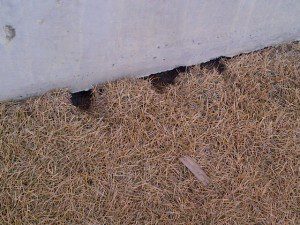Comprehensive Guide to Efficient Vole Parasite Control: Problem Recognition and Therapy Approaches
In the world of effective pest control, vole problems present a distinct difficulty that requires a calculated strategy. These tiny rats, typically mistaken for mice, can damage yards, lawns, and plants if left unchecked. Determining the indicators of vole visibility and executing targeted treatment methods are necessary parts of an effective bug management strategy. By discovering the nuances of vole actions, recognizing key indications of infestation, and reviewing an array of control options, one can create a thorough technique to battle these elusive bugs.
Recognizing Vole Habits
Vole habits is defined by their delving routines and quick recreation prices, making them a difficult insect to regulate properly. These small rats usually develop elaborate tunnel systems underground, using them for shelter, food storage, and transport. Voles are herbivores, consuming a range of plants, bulbs, yards, and origins, which can create substantial damage to yards, orchards, and grass. Their fast reproductive rate more makes complex control efforts, with women efficient in creating numerous clutters in a single year, each having several offspring.
Voles are most active throughout the early morning and evening hours, spending the majority of their time foraging for food. Their burrowing routines not only disturb gardens and grass yet likewise make them testing to detect and eliminate. Comprehending vole habits is vital for efficient insect control approaches. By identifying their burrow locations, keeping an eye on feeding locations, and executing targeted control methods, such as trapping or habitat alteration, vole invasions can be handled efficiently.
Indications of Vole Infestation

Prevention Techniques
Carrying out effective prevention approaches is critical in decreasing vole infestations and securing plant life from their devastating feeding habits. To avoid vole invasions, it is crucial to begin by eliminating prospective food resources and sanctuary.
Routinely examining the building for indications of vole activity, such as paths and tunnel openings, is essential for very early detection and prompt action. If vole activity is suspected, consider using repellents or catches purposefully placed near their paths.
Non-Lethal Control Techniques
To successfully manage vole populations while prioritizing gentle techniques, non-lethal control methods offer sensible remedies for reducing vole damage in yards and landscapes. These barriers can be buried at least 12 inches deep and curved at a 90-degree angle to stop voles from burrowing below.

Lethal Control Options
One reliable method for attending to vole invasions in gardens and landscapes includes the tactical use of lethal control options. When encountered with an extreme vole invasion that non-lethal methods have actually stopped working try this to contain, carrying out deadly control measures ends up being essential. On the whole, when employing dangerous control choices, it is essential to do so properly and in conformity with regional regulations to successfully take care of vole invasions.
Conclusion
To conclude, effective vole bug control requires an extensive understanding of vole behavior, identification of indications of problem, application of prevention approaches, and utilization of both non-lethal and deadly control methods. By incorporating these techniques, people can properly handle vole populations and safeguard their home from damage. It is essential to resolve vole infestations quickly to prevent additional problems and lessen the influence on the surrounding setting.
Provided the intricate tunnel systems and fast recreation rates characteristic of voles, recognizing the indications of vole infestation comes to be important in effective insect control. One of the main indicators of vole existence is the presence of surface runways reference or tracks in grass or snow, normally concerning 1-2 inches large, developed as voles take a trip in between their burrows and food sources.To efficiently manage vole populaces while focusing on humane methods, non-lethal control techniques supply useful solutions for lowering vole damage in landscapes and gardens.One reliable approach for resolving vole infestations in landscapes and yards entails the calculated use of deadly control options. vole pest control.In conclusion, reliable vole parasite control requires a comprehensive understanding of vole actions, identification of indicators of problem, execution of avoidance strategies, and utilization of both non-lethal and dangerous control methods